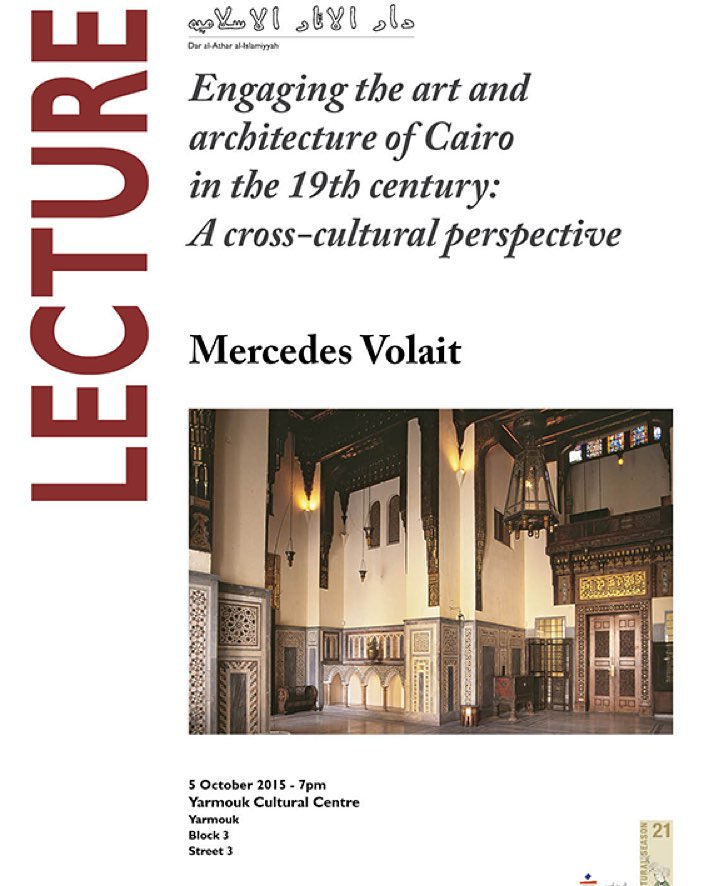Mercedes Volait
Mercedes Volait is CNRS Research professor at INHA (Institut national d’histoire de l’art) in Paris and head of InVisu, a digital research center on architecture and heritage in the modern Mediterranean. Her current research focuses on issues of patronage, materiality and consumption in connection with the production of Mamluk style architecture and design in nineteenth-century Cairo.
She recently authored Fous du Caire [Crazy about Cairo: Eccentrics, architects and art lovers in Egypt (1867-1914)] (2009), and is the current editor of the digital journal Architecture beyond Europe.
Engaging the art and architecture of Cairo in the 19th century: A cross-cultural perspective
The monuments of Cairo exerted a fascination that translated into many media, from antiquarianism to design, both in Egypt and abroad. Myriad drawings ended up circulating in the general press. By the 1870s, a solid body of visual evidence, later supplemented by commercial photography, had made historical Cairo known to larger audiences than the privileged traveller. Collecting developed in parallel and with it, a blooming trade in antiques throughout the region.
This Mamluk craze, as the phenomenon is generically termed today, was predominantly European, and yet it was far from being one-sided. An early event is the display of a collection of Islamic woodwork by an Egyptian amateur at the 1867 World’s Fair. Using selected examples, in Egypt and elsewhere, documented by little-known archive material, the talk will illustrate the agencies and aesthetics involved in the discovery and revival of Mamluk art and architecture in the 19th century.

Mercedes Volait. Engaging the art and architecture of Cairo in the 19th century: A cross-cultural perspective
CS21-L 2